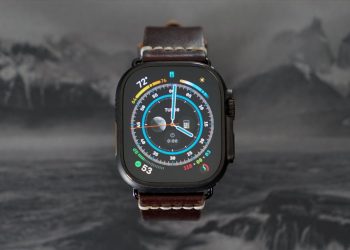The iPhone 17 Air is Apple’s boldest smartphone design move in years. Launching on September 9, 2025, it promises the thinnest and lightest form factor in the lineup, with a 6.6-inch display that channels the minimalist style of the MacBook Air and iPad Air. Yet, beneath the futuristic exterior, questions remain about whether it delivers enough performance and value for everyday users.
What makes the iPhone 17 Air different
Apple is positioning the iPhone 17 Air between the standard iPhone 17 and the Pro models. Its main appeal lies in design—thin, lightweight, and stylish. However, several trade-offs may leave buyers second-guessing.
- Single rear camera: Unlike the baseline iPhone 17, which includes a dual-camera system, the Air is rumored to feature only one wide-angle lens. This limits versatility for ultrawide, zoom, or macro photography.
- Battery compromises: The slimmer frame reduces battery capacity. Reports suggest just 60–70% of users will get a full day’s use without charging, compared to 80–90% on other models.
- Unclear performance chip: It remains uncertain whether the Air will ship with the A19 chip or the A19 Pro, leaving questions about long-term power and efficiency.
- Pricing concerns: With an expected $899 price tag, the Air sits close to the Pro line but may not offer enough value to justify its compromises.
Comparison: iPhone 17 Air vs iPhone 17 vs iPhone 17 Pro
Apple’s strategy involves replacing the Plus model with the Air. To see where it stands, here’s a look at how it compares to other models:
| Feature | iPhone 17 Air | iPhone 17 | iPhone 17 Pro |
|---|---|---|---|
| Display | 6.6-inch OLED, 120Hz | 6.1-inch OLED, 120Hz | 6.1-inch/6.7-inch ProMotion LTPO OLED |
| Camera | Single wide-angle | Dual camera (wide + ultrawide) | Triple camera (wide, ultrawide, telephoto) + LiDAR |
| Chipset | A19 (unconfirmed A19 Pro) | A19 | A19 Pro |
| Battery | Slim battery, shorter life | Full-day battery | Extended battery, efficient design |
| Weight | Lightest iPhone ever | Standard | Heavier, premium materials |
| Price | ~$899 | ~$799 | ~$1,099+ |
This table highlights Apple’s gamble: the Air emphasizes form over function, while the baseline model delivers balance and the Pro remains the powerhouse.
Strategic gamble by Apple
Apple hopes the iPhone 17 Air will reignite consumer excitement with its design. However, history shows that sleek form alone doesn’t guarantee success if practical features fall short. The missing second lens and weaker battery could frustrate buyers who expect more at this price tier.
Meanwhile, Apple is also preparing to roll out Apple Intelligence in China by the end of 2025, working with Alibaba and other partners to integrate new AI capabilities. This technology, positioned as a core selling point of the iPhone 17 family, may help offset concerns about hardware trade-offs by adding software-driven value.
Should you buy the iPhone 17 Air?
The answer depends on priorities. If style, thinness, and light weight top the list, the iPhone 17 Air could be appealing. Yet, users who need strong battery life, camera versatility, or top-end performance may find better value in the iPhone 17 or Pro models.
Apple has taken a risk by replacing the Plus with the Air. If consumer reception leans more toward function than fashion, the Air could face a tough road. Still, as with past Apple experiments, its design-first approach may eventually shape future devices across the lineup.














